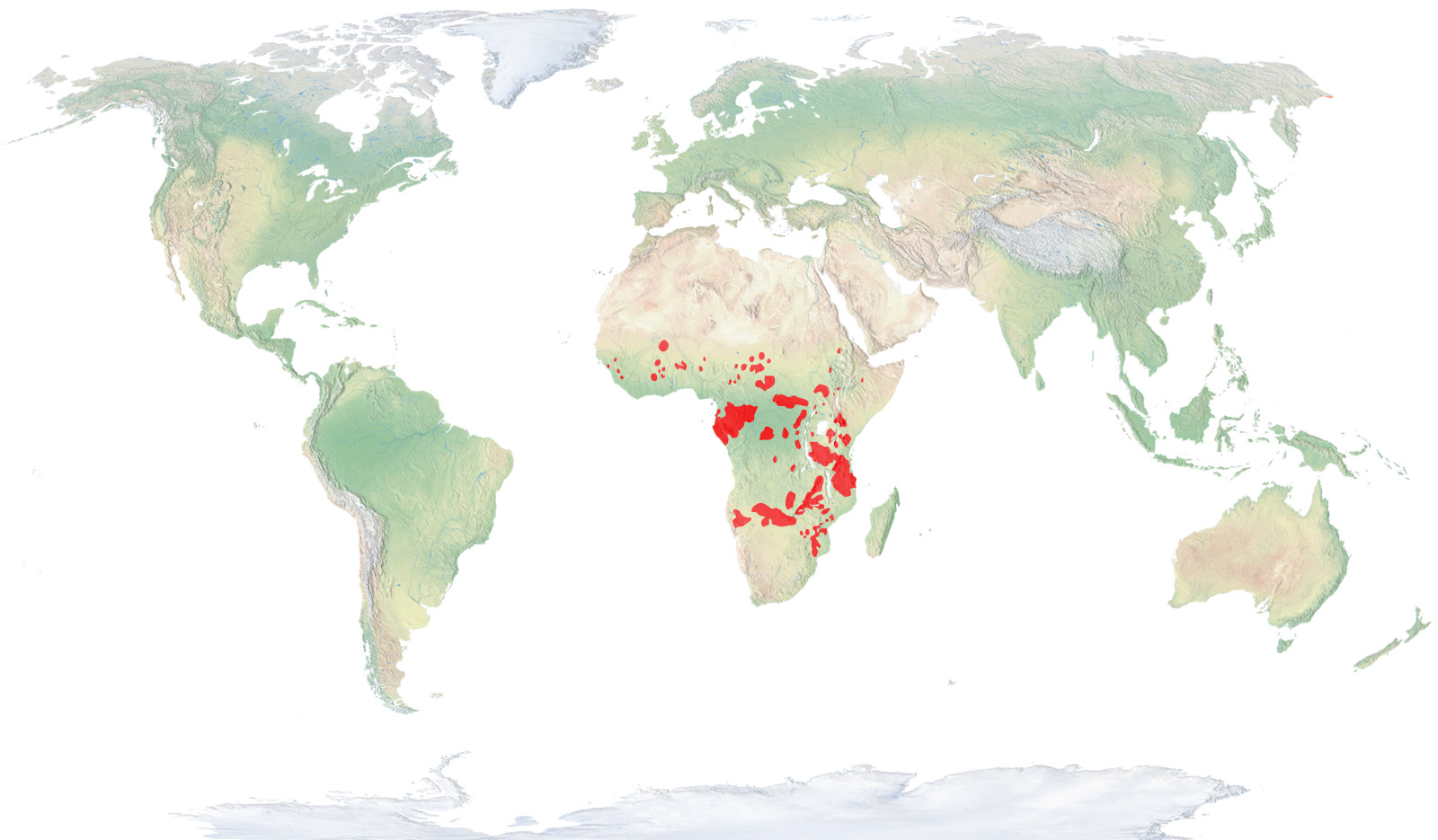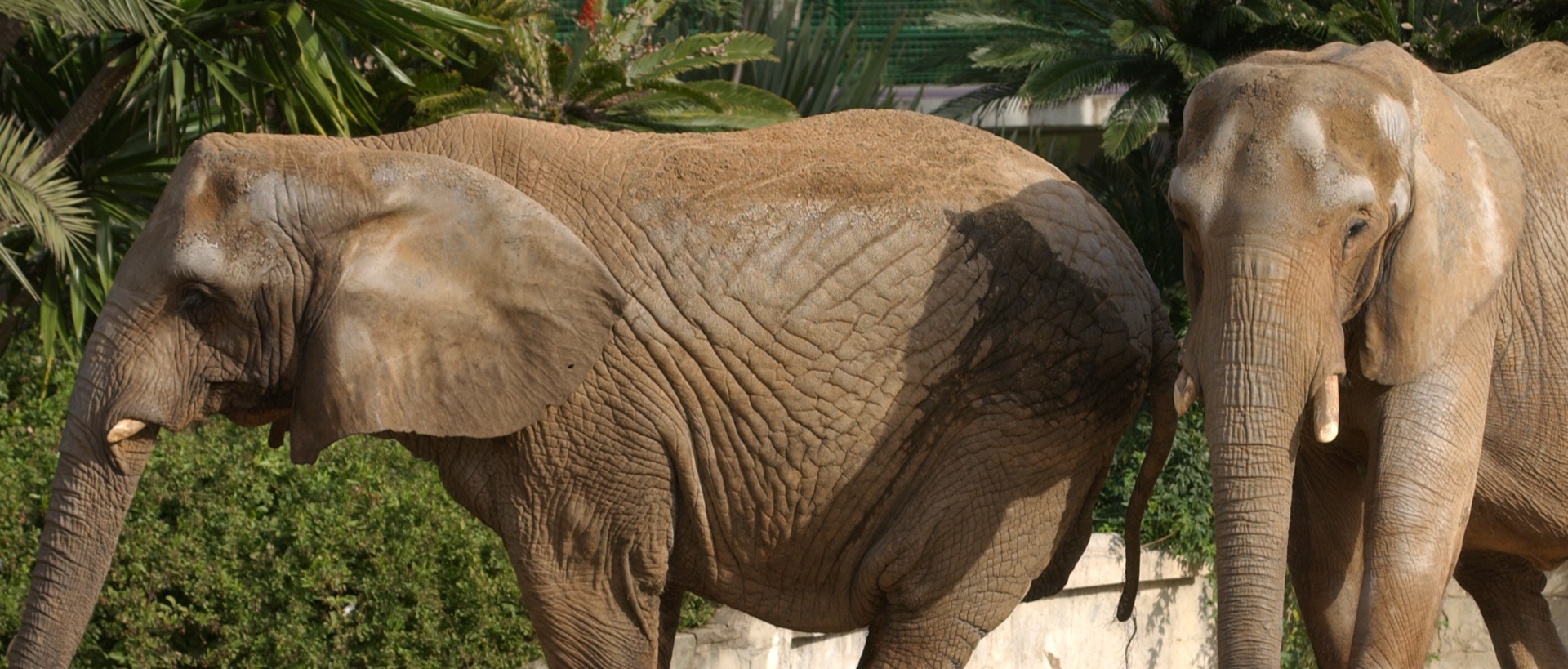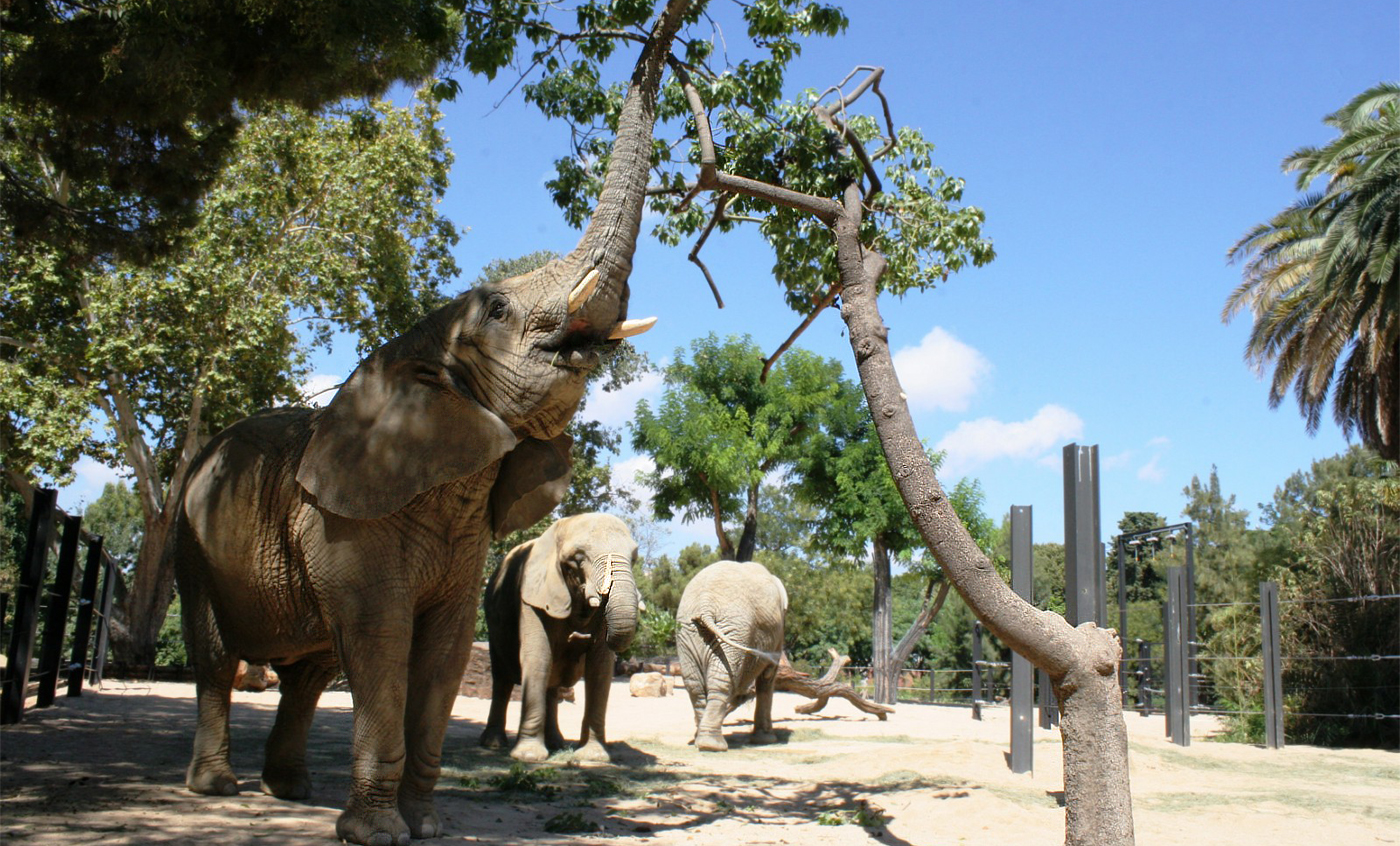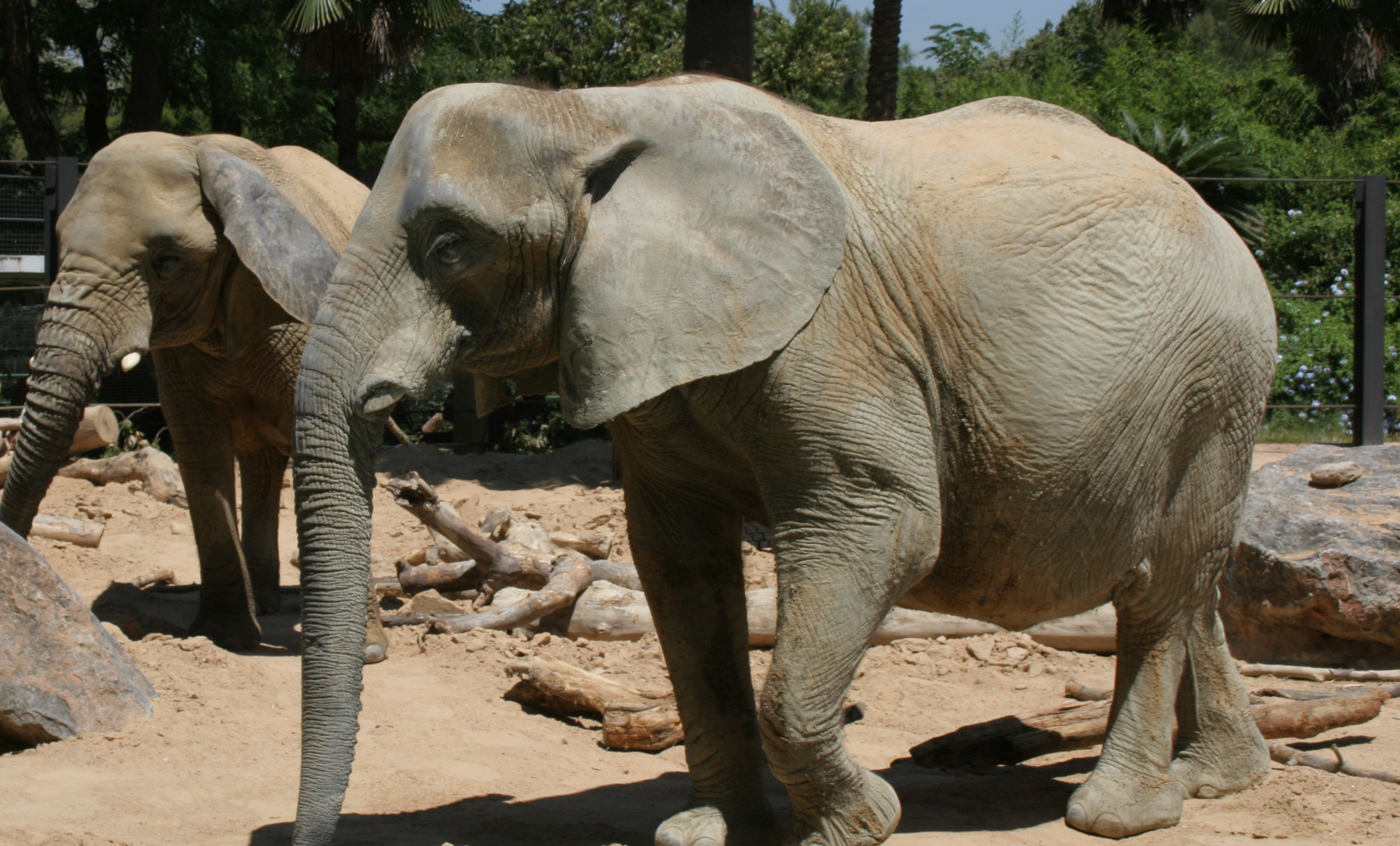African bush elephant
The African elephant, which can reach up to 4 m tall and exceed 6.000 kg in weight, is the largest land mammal. It lives in groups under the leadership of an adult female, either in savannahs or in jungles, in almost all Africa, in southern Sahara.
Uncontrolled killings due to ivory trade are the cause that, nowadays, this species is critically endangered, although ivory trade is strictly regulated worldwide.
Natural habit
Great part of Africa, in southern Sahara.

- Distribution / Resident
- Breeding
- Wintering
- Subspecies
Risk level
- Extint
- Extint in the wild
- Critically endangered
- In Danger
- Vulnerable
- Near threatened
- Minor concern
- Insufficient data
- Not evaluated
Taxonomy
Physical characteristics
Biology
Reproduction
Biology
The African elephant is the largest land mammal. Its main characteristic is its long and muscular trunk, consisting of the union of the nose and upper lip, which has olfactory, tactile and prehensile function. Its extraordinarily prolonged upper incisors are its typical defence, much more developed in the case of males. Some individuals can reach more than 3 m long and weight more than 100 kg.
The African elephant differs from the other existing species, the Asian elephant, in its concave back, the size of its ears, bigger than the rest of the head, and in the two lobes at the end of the trunk. Another difference between both species is that the tusks of most female Asian elephants are not much visible beyond the lips.
Moreover, jungle African elephants and Asian elephants usually have five fingers in their front limbs and four in the rear ones, while the African bush elephant normally only has four fingers in the front limbs and three in the rear ones.
Savannahs with trees, open savannahs, grass plains, big deltas, river valleys, semi-desert areas and even deserts.
It has a very general herbivore diet, and feeds on all kinds of grass, tree and bush leaves, roots, tubers, seeds, fruits or bark, upon availability. They can eat more than 200 kg of vegetable matter in one day and drink more than 100 daily litres of water.
Gestation lasts for 22 months and usually a single calf is born, being one meter tall and weighing 100 kg, that will be watched and looked after by all the members of the group. The young calves breastfeed for two years and reach puberty at 12, when they separate from their original group. They usually live between 60 and 70 years.
They are very sociable animals that live in matriarchal herds of 20 to 50 individuals, led by a single adult female. Old males are usually solitary and only approach matriarchal groups during mating season.
They are very mobile animals that roam looking for food and water, walking at a pace of 4-6 km/h, although they can double this speed during hours if necessary. Actually, when fleeing or charging against an enemy, they can exceed 40 km/h.
Uncontrolled killings due to ivory trade are the cause that nowadays it is critically endangered, despite being protected in many parks and other African reserves, as well as ivory traffic being strictly prohibited worldwide.





